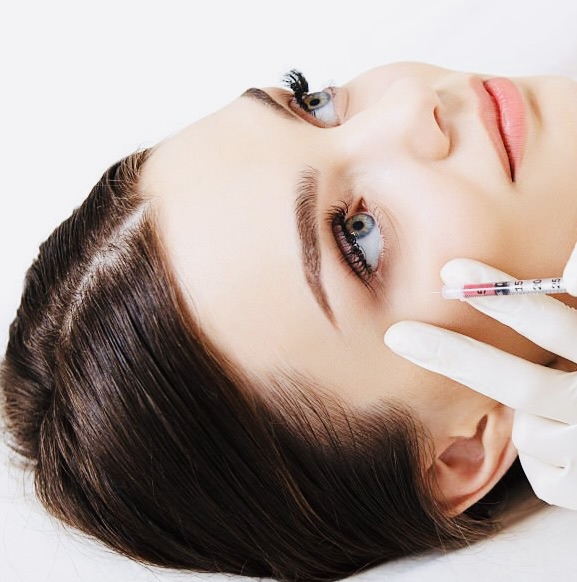Botox
Botox is the toxin of the type A Clostridium Botulinum bacterium. By paralyzing muscle tissue and providing immobility, it is widely used in various medical fields today. It is used in the treatment of eye diseases, especially in the correction of strabismus, facial paralysis, congenital facial asymmetries, injuries from accidents, and some conditions accompanied by excessive sweating, as well as in the treatment of chronic migraine pain. Additionally, it is used for cosmetic purposes.
Our wrinkles are formed when the muscles responsible for them work excessively in certain areas. Wrinkles between the eyebrows, around the eyes, and on the forehead result from repetitive facial expressions.
When Botox is applied to a muscle, that area temporarily loses muscle and contraction function. Sometimes, patients seek medical advice for social reasons, stating, "The lines between my eyebrows make me look very tense and irritable." In individuals who use their facial expressions excessively, wrinkles around the eyes can make them appear older, and in the long run, it can even prevent sagging of the eyelids.
In addition, during the summer months, excessive sweating is a common reason for patients to turn to Botox. Excessive sweating in the palms and underarms can sometimes cause discomfort in social situations. Especially, palm sweating can negatively impact individuals psychologically. In such cases, applying Botox to the palms and underarms can provide relief from this issue.
Botox procedures are performed with tiny needles known as Botox needles. It causes discomfort similar to a mosquito bite. Prior to application, local anesthetic creams are applied to eliminate this sensation. It takes effect within an average of 1 week, starting from 24 hours, and maintains its efficacy for 4-6 months. When applied by expert physicians, Botox is a safe method. The most important aspect to be careful about in Botox applications is not to be too widespread. When given in appropriate doses to specific areas, natural-looking results are achieved, and no one can tell that it has been done. Excessive application and increased dosage can lead to unnatural-looking, mask-like faces. Therefore, it is crucial for the administering physician to maintain naturalness and apply an adequate dose.




